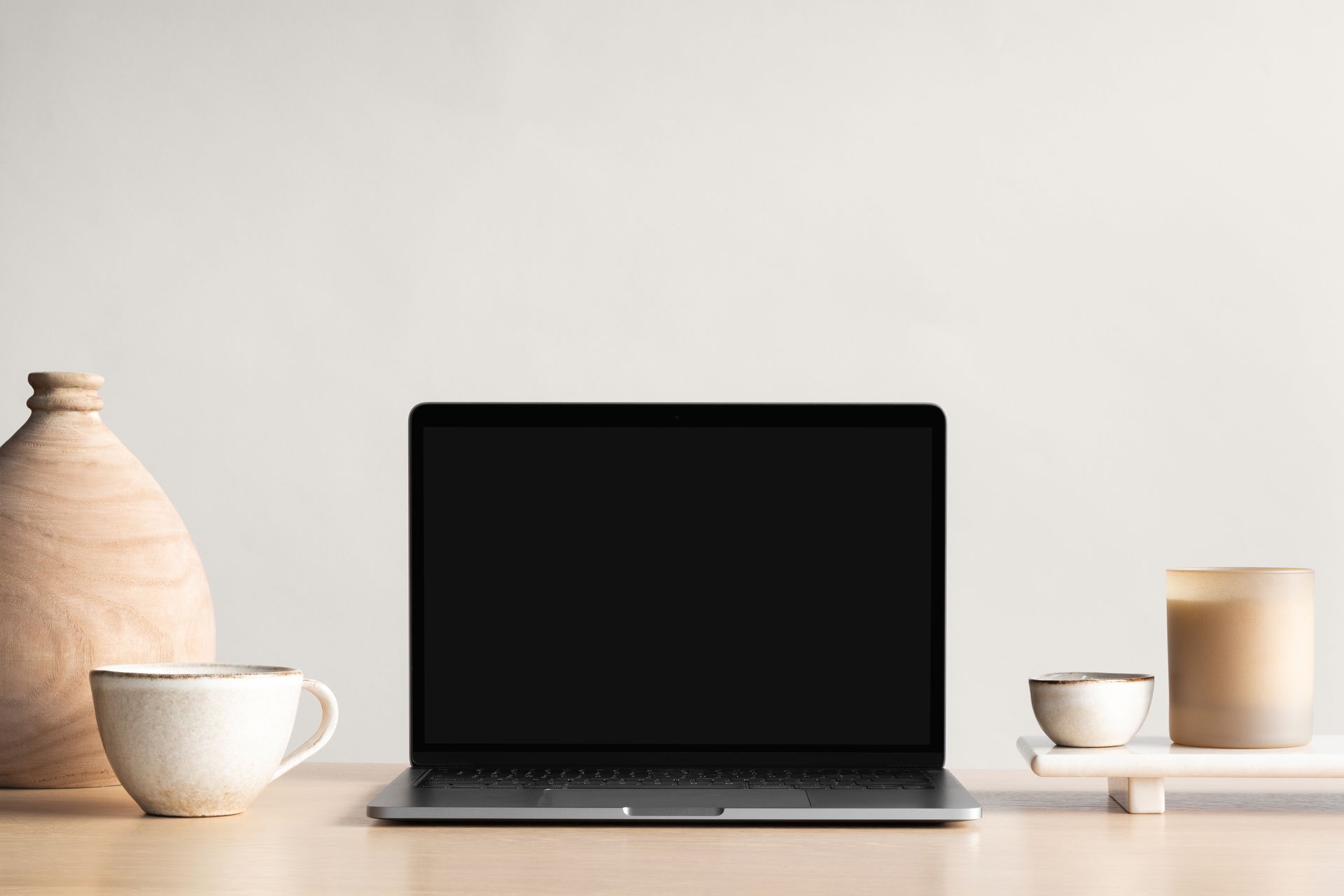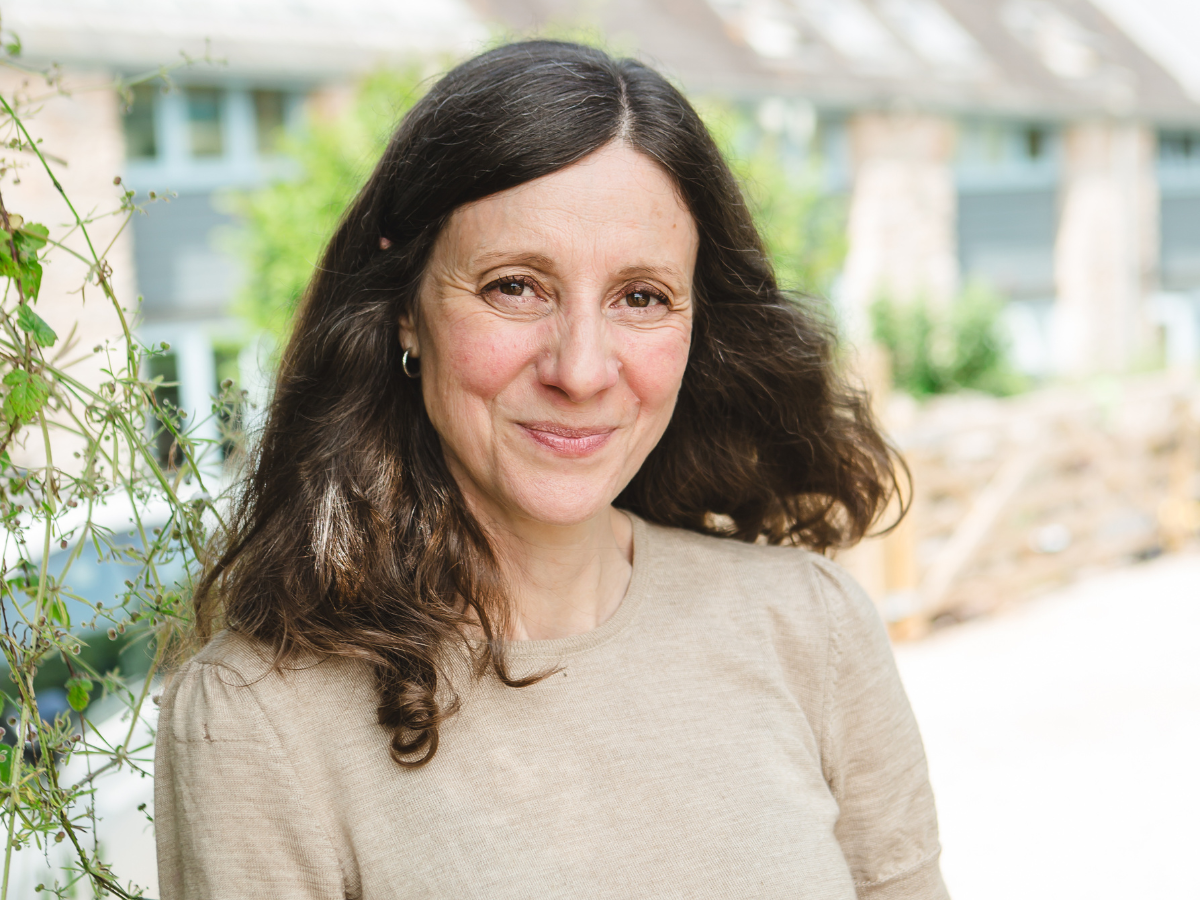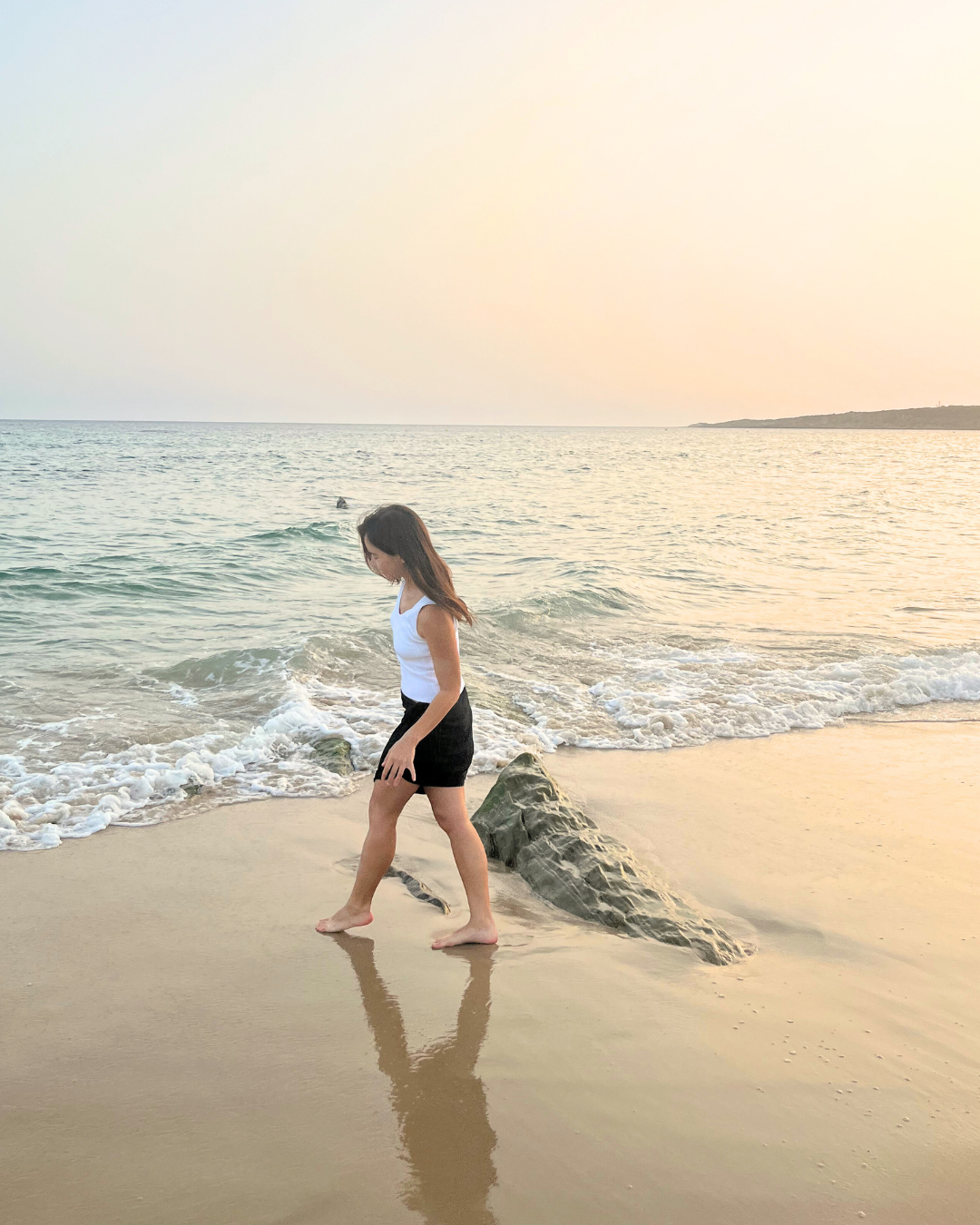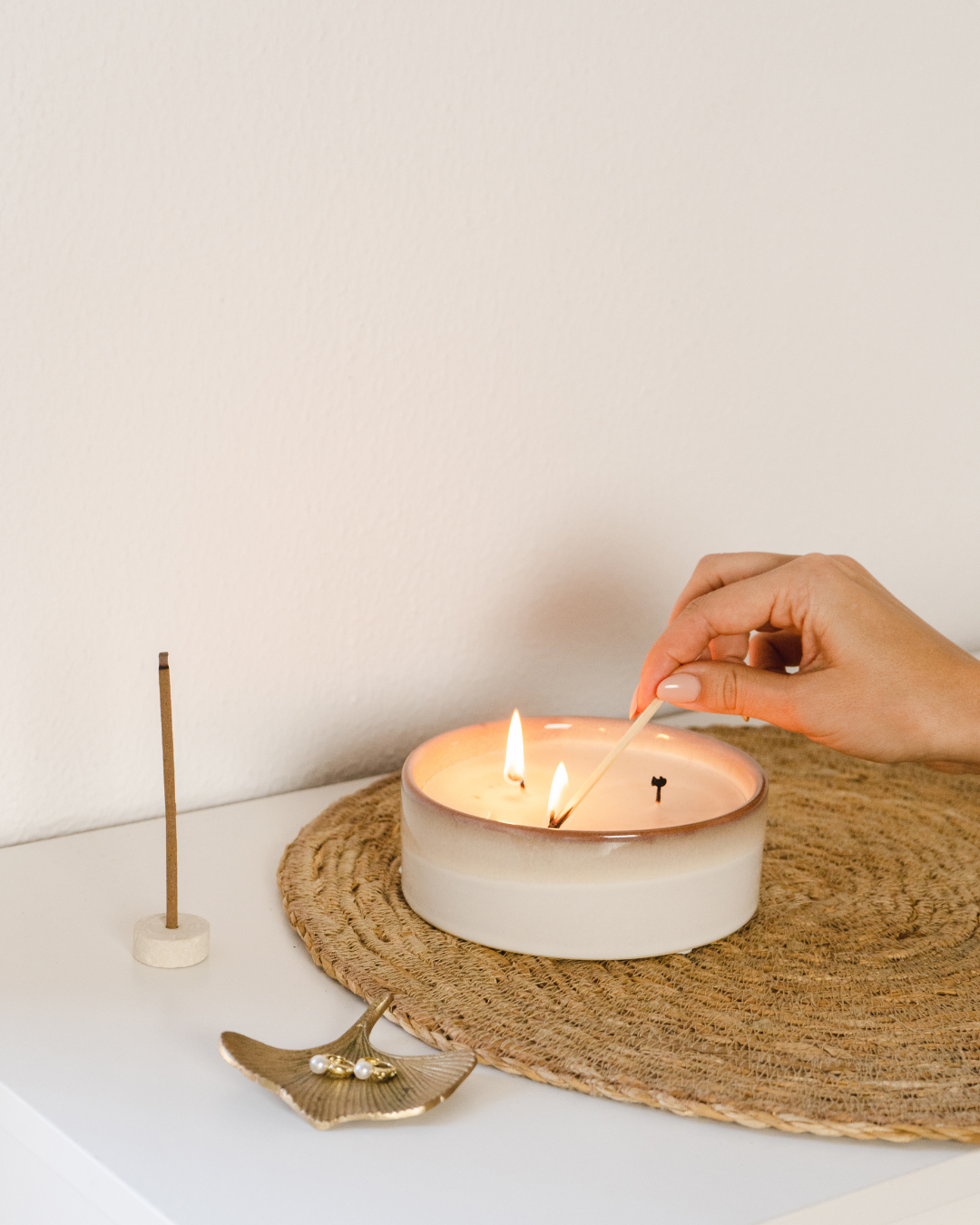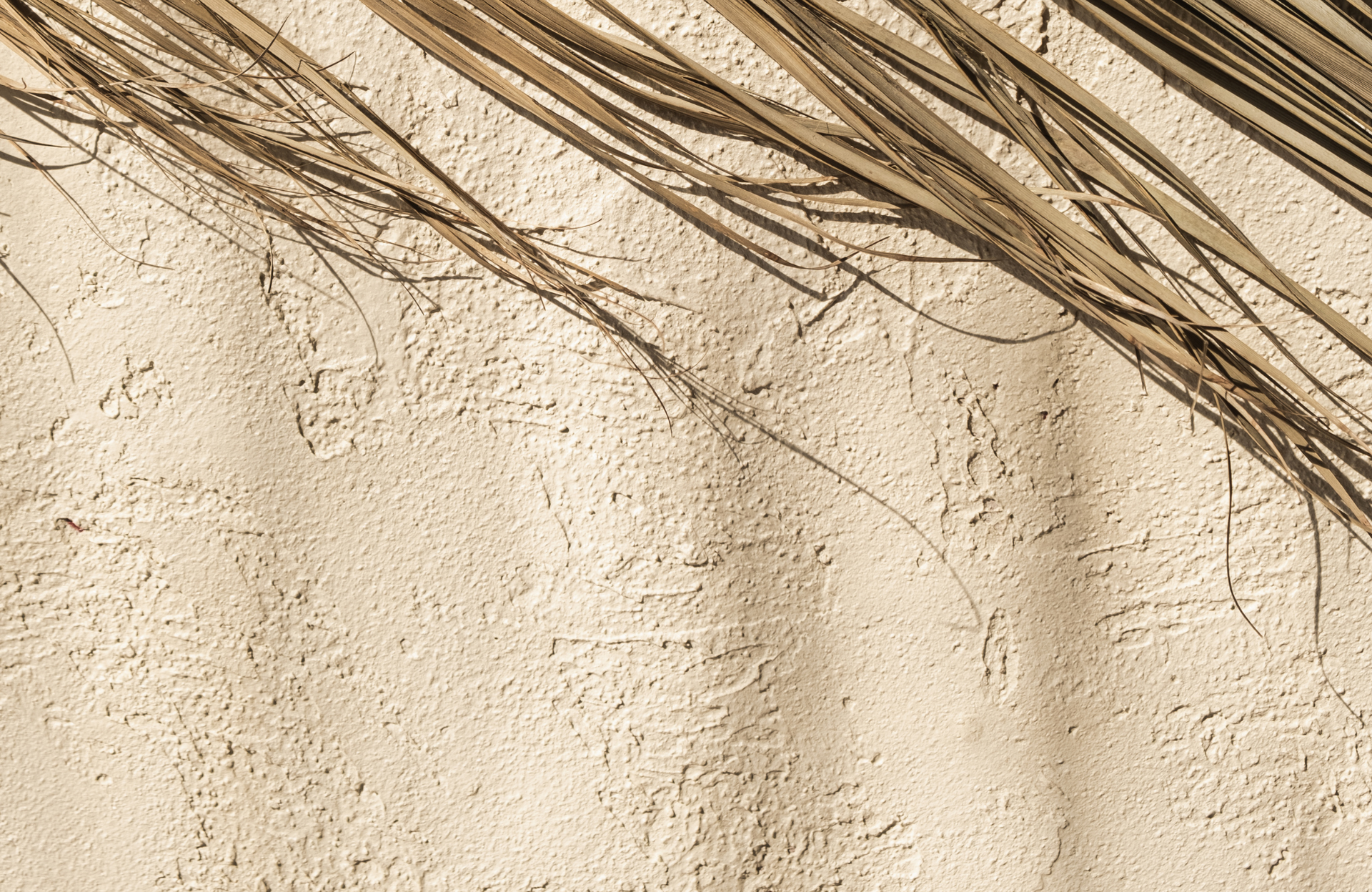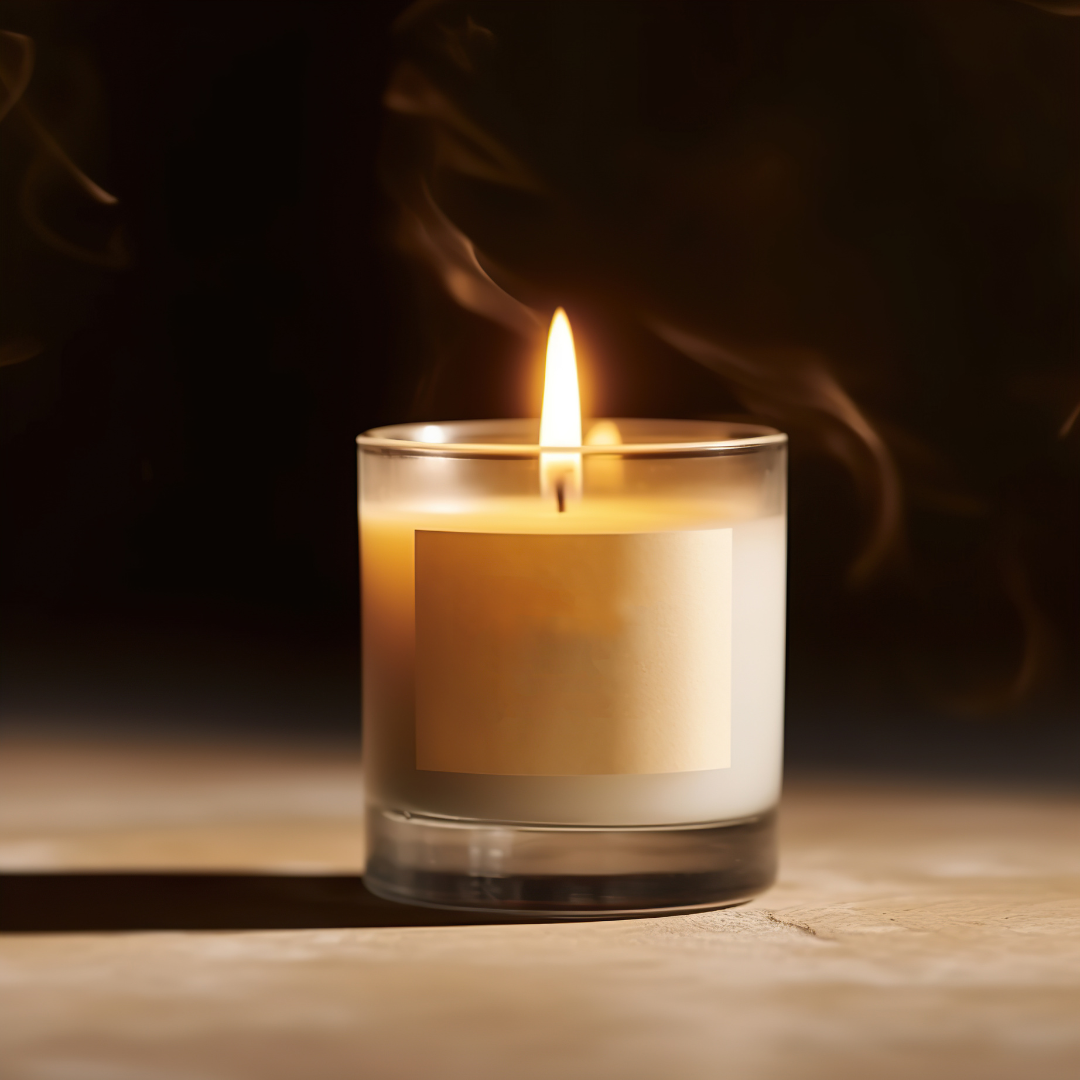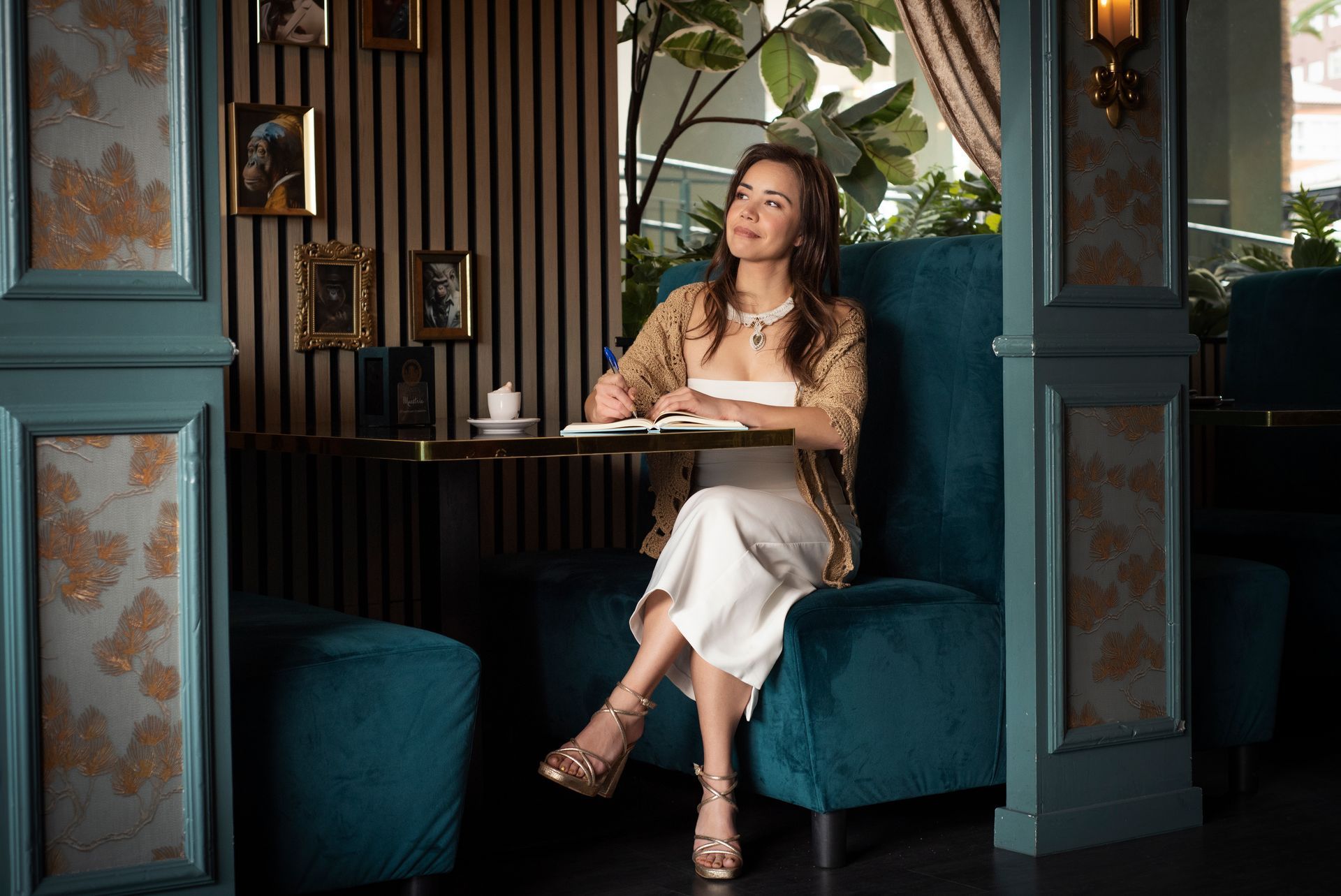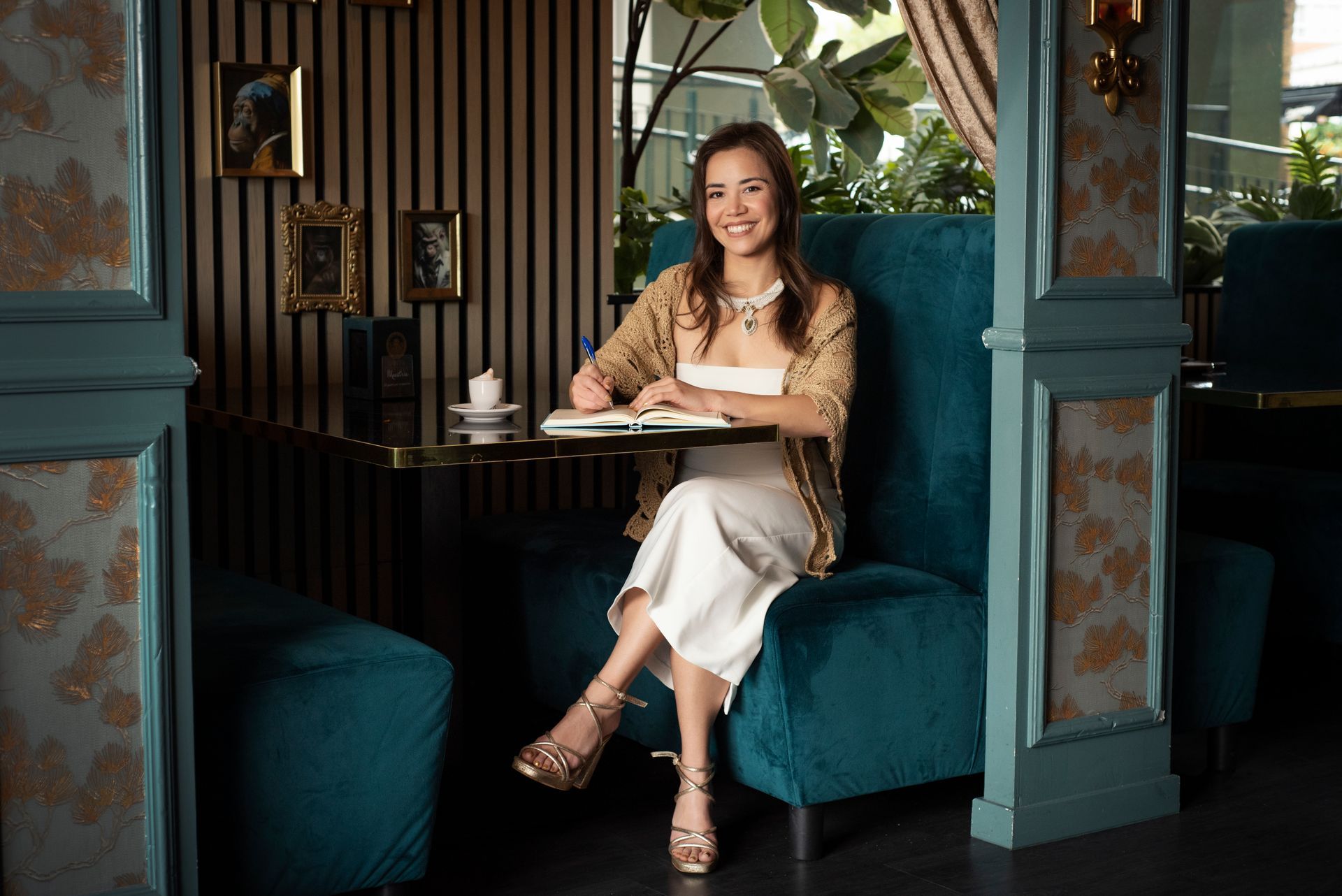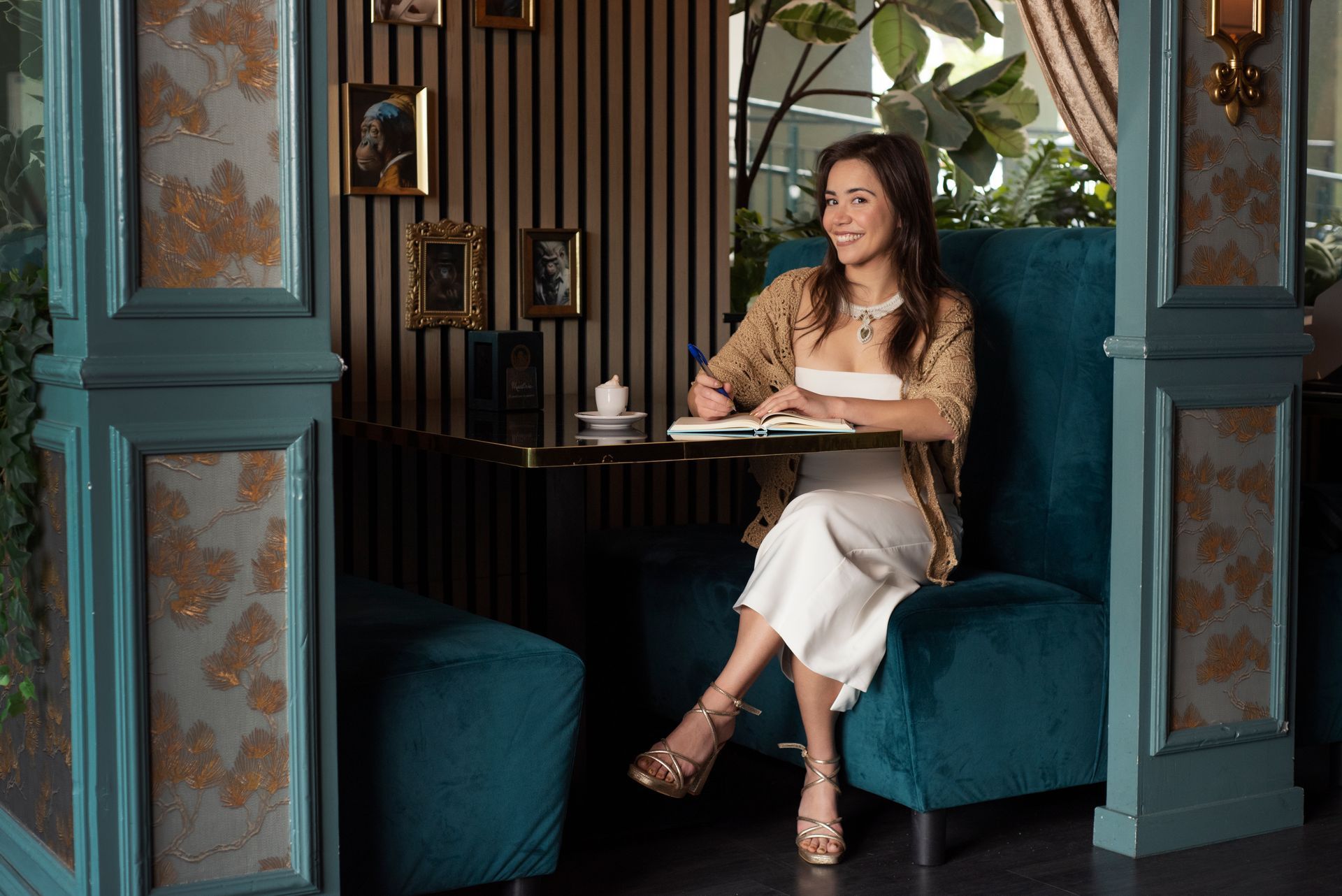Decolonizing Yoga, Omwashing, and Collective Liberation: A Conversation with Dr. Sheena Sood
Unpacking the weaponization of yoga — from its roots in war and colonialism to its present-day entanglement with state violence — and exploring how to reclaim the practice for justice, ethics, and collective healing.
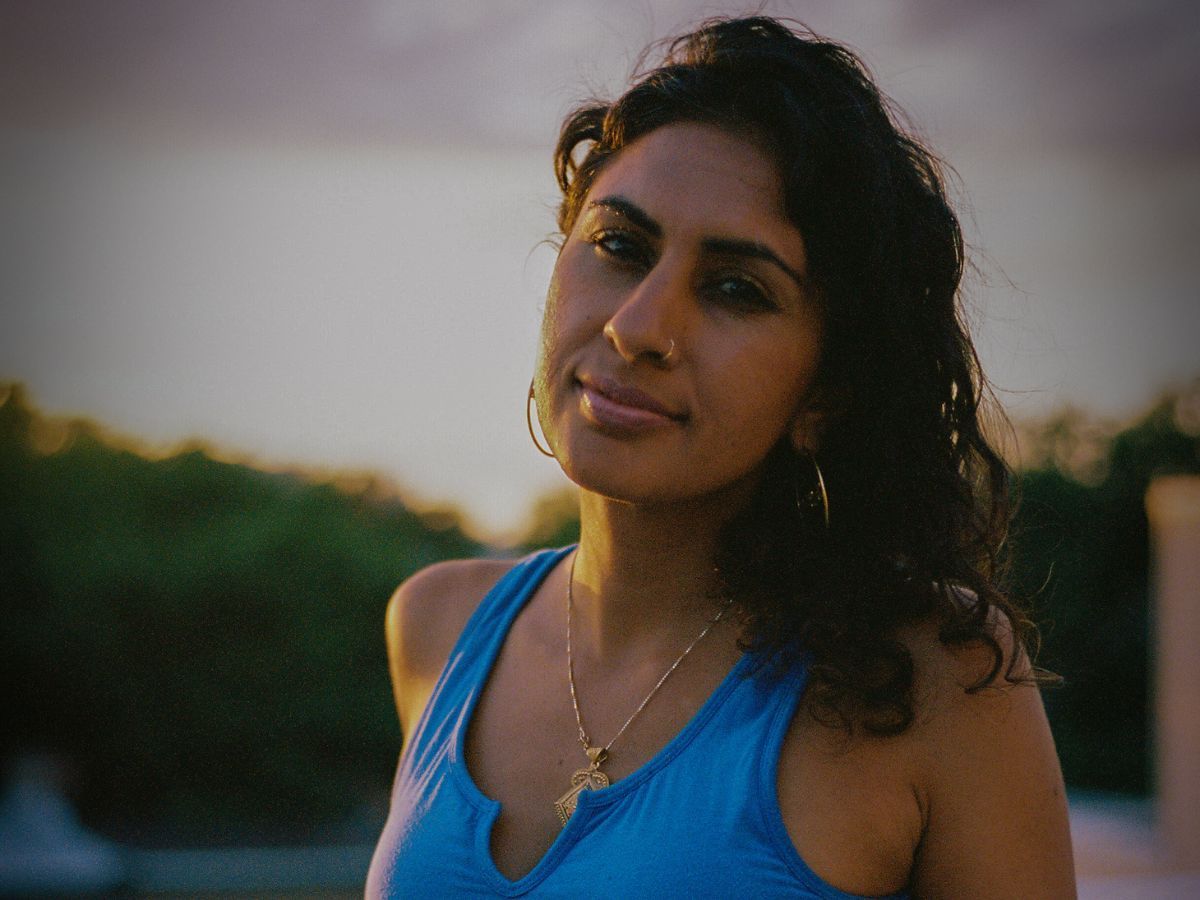
Decolonizing Yoga: Beyond Representation and Into Liberation
Yoga has been celebrated worldwide as a path to peace, mindfulness, and unity — but what happens when this ancient practice is used to justify war, mask state violence, and promote nationalist and supremacist agendas?
In this episode of the Equitable Wellness Podcast, Sheena Sood, PhD — activist scholar, yoga teacher, and co-founder of Yogis for Palestine — unpacks the shadow side of yoga, from its roots in war propaganda to its modern-day appropriation by states and militaries. We discuss Omwashing, a term she coined, and explore how to reclaim yoga for justice, ethics, and collective healing.
Three Pearls of Wisdom
🪷 Yoga is a neutral tool — it can be used for liberation or weaponized for state violence.
🪷 Representation isn’t decolonization — ethics and anti-imperial frameworks matter more than optics.
🪷 Hope is a discipline — communal grief and sustained action keep radical movements alive.
Episode at a Glance
00:00 – Welcome and why this conversation matters for anyone questioning the politics of yoga
04:04 – Sheena’s path: from learning mantras with her grandmother to merging yoga with social justice
20:34 – What is “Omwashing” and how it mirrors greenwashing and pinkwashing
22:24 – Yoga’s entanglement with caste, militaries, and nationalist propaganda
35:03 – Shayna’s story: breathing techniques used by CIA snipers
44:47 – Sheena on yoga’s warrior traditions and weaponization throughout history
53:36 – Yogis for Palestine and reimagining the International Day of Yoga Action as resistance
01:10:19 – Hope as a discipline, communal grief, and sustaining activism
01:17:32 – Why representation isn’t enough: building ethical frameworks for decolonized yoga
Selected Links from the Episode
Connect with Dr. Sheena Sood → Website | Publications | Instagram | Newsletter
- International Day of Yoga as Omwashing — Al Jazeera
- International Day of Yoga Action for Palestinian Liberation — Jadaliyya
- Yogis4Palestine.com | Yogis for Palestine Instagram
- Essay: Towards a Critical Embodiment of Decolonizing Yoga
- Yoga Warrior Tales Instagram
- Yoga Warrior Tales — Season 1 Episodes (7 full kids yoga videos)
Listen, Read, or Watch the Episode
YouTube | Substack | Apple Podcasts | Spotify
Yoga’s History With War Propaganda
Sheena explains how yoga has historically been tied to warrior traditions, including its depiction in the Bhagavad Gita — a spiritual text set on a battlefield. She challenges the Western image of yoga as inherently peaceful or "social justice-y," showing how yoga practice has also been embedded in state militarism, casteism, and colonial power structures.
How Yoga Masks State Violence Worldwide: Omwashing
Omwashing, like greenwashing or pinkwashing, is when institutions use yoga as a political cover for harmful agendas. From police departments offering yoga training offering yoga training to project reform, to the Indian government using International Day of Yoga for nationalist propaganda, to the Israeli army and Zionist entity weaponizing yoga amidst a genocide in Gaza, Sheena reveals how these efforts distract from calls for justice.
Yoga in Policing — Real Reform or Mere Distraction?
Police departments in the U.S. have promoted yoga and meditation for officers as a way to curb violence. But as Sheena notes, these programs often sidestep the deeper calls for systemic change — such as abolition and investment in community care — using wellness optics instead of dismantling harmful systems.
When Yoga Techniques Fuel State Violence
From CIA snipers using yogic breath control to Israeli soldiers practicing mindfulness to improve shooting accuracy, Sheena exposes the stark reality: yoga is a neutral tool. It can be harnessed for healing or harm — depending on who wields it and why.
Yoga for Peace Amidst Gaza’s Warplanes
Through Yogis for Palestine, Sheena and others organized over 170 yoga events worldwide, raising more than $22,000 for displaced children in Gaza. She shares how these gatherings create space for grief, solidarity, and resistance, even under the shadow of ongoing violence.
Reclaiming Yoga for Justice and Liberation: Decolonial Yoga Insights
Sheena urges practitioners and yoga teachers to develop an ethical framework for practice that goes beyond diversity optics. "I do think that one of the things we have to stop doing when we talk about decolonizing yoga is imagining that simply diversifying yoga spaces with BIPOC people, with Black, Indigenous, People of Color people is going to be the solution to decolonizing yoga," says Sheena Sood.
"I think in order to build an anti-imperial future, we actually have to think about the ethics of how yoga is being used as this tool of oppression and really develop a lens and a framework that pushes back on those specific appropriations that might be by people of color, right?"
Staying Grounded While Staying Radical
Activism can be exhausting, especially in the face of state-sanctioned violence. Sheena offers personal strategies, including Mariame Kaba’s concept of “hope as a discipline” to support a yoga practice rooted in justice.
Threads from the Episode
- Yoga is a neutral tool — it can heal or harm.
- Omwashing uses yoga to cover up injustice.
- Historical roots show yoga tied to war and hierarchy.
- Police & military programs use yoga as reform optics.
- Yogis for Palestine shows yoga’s potential for solidarity and action.
- Decolonising yoga requires ethics, not just representation.
- Collective care is as vital as personal practice.
- Staying radical requires both hope and grounding.
Full Show Notes — What We Cover
00:00 – Welcome, context, and why this conversation matters for anyone who’s questioned the politics of yoga.
00:48 – Introducing Sheena Sood, PhD: scholar, educator, healer, visionary, and activist.
04:17 – Land acknowledgments in Philadelphia and Spain.
05:40 – Shayna’s tension between yoga’s transformative benefits and its entanglement with appropriation, casteism, and patriarchy.
07:45 – Why Sheena’s work feels like an antidote to discomfort in the yoga world.
10:04 – Sheena’s journey: learning yoga from her grandmother, navigating Hindu nationalism, and returning to the practice through social justice organizing.
13:12 – Merging yoga with political activism: yoga fundraisers for Mumia Abu-Jamal and movement organizers.
17:58 – Weaving spirituality, social justice, and activism into sustainable practice.
21:29 – Defining “Omwashing” — yoga as a tool to cloak state violence and oppression.
22:52 – Caste, Sanskrit, and the romanticization of yoga’s past.
26:35 – From greenwashing to Omwashing: yoga in police academies, militaries, and state propaganda.
30:38 – Israeli military use of yoga after compulsory service; parallels with Modi’s India.
33:19 – Sheena confirms she coined the term “Omwashing.”
34:38 – Beyond cultural appropriation: systemic critiques of yoga’s role in oppression.
39:21 – Shayna’s story: breathing techniques used by CIA snipers; the shock of militaristic applications.
47:27 – Yoga’s historical connection to warrior traditions and why weaponization shouldn’t surprise us.
51:21 – How living in violent societies numbs us to yoga’s co-optation.
53:36 – Yogis for Palestine: origins, goals, and the International Day of Yoga Action for Palestinian Liberation.
56:17 – Fundraising for a children’s camp in Gaza and politicizing yoga as solidarity.
58:05 – 170+ teachers worldwide raise $22,000 — and why the rubric matters for ongoing action.
01:00:48 – Spaces for grief, resistance, and unapologetic pro-liberation stances in yoga.
01:06:05 – Dualities: rage and grief alongside joy and belonging in Spain.
01:09:01 – Naming contradictions to make space for liberatory futures.
01:10:08 – Q&A: sustaining hope, building community care, and envisioning decolonized yoga.
01:12:36 – Hope as a discipline (Mariame Kaba) and the role of communal grief.
01:15:45 – Balancing self-care without sliding into commodified, individualistic wellness culture.
01:17:29 – Why representation isn’t enough — building ethical frameworks against oppressive appropriations.
01:20:13 – Yoga to deepen self-awareness and collective care.
01:21:23 – Closing thoughts, resources, and how to connect with Sheena’s work
People & Mentions
Lenni-Lenapehoking people · Baba Ramdev · Hindutva ideology · Highlander Research and Education Center · Movement to Free Mumia Abu Jamal · George Floyd · “Little Israel” in Himachal Pradesh · Palestinians in Gaza and the West Bank · Narendra Modi · Magnolia Zuniga · Nissim Amon · Tejal Patel · Hadeel Gharbawi · Al-Jawad Camp · Donald Trump · Mariame Kaba
Key Takeaways
- Decolonial yoga does not stop at BIPOC representation — it demands radical ethical frameworks.
- “It’s important to talk about the harmful weaponization of yoga by the Zionist entity and other members of the far right who are in alliance with Israel right now.”
- The liberatory potential of yoga includes organized political action — even militant political action — in the face of injustice.
- A truly decolonial approach is built in the present toward the future; it can’t simply be reclaimed from the past.
- Recognizing yoga’s entanglement with systems of violence invites more intentional, politicized practice.
- Naming contradictions creates the space to birth more liberatory ways of practicing and teaching yoga.
Listen, Read, or Watch the Episode
YouTube | Substack | Apple Podcasts | Spotify
About Sheena Sood, PhD
Sheena is an Assistant Professor of Sociology at Delaware Valley University; and a Philly-based activist scholar, yoga practitioner, and healing justice visionary. She earned her yoga certifications at Kailash Tribal School in McLeodganj, India, and her research “Omwashing Yoga: Self-care and State Violence among the Global Far-Right” examines how right-wing movements in India, Israel and the U.S. appropriate yoga to advance ethnonational, colonial, and supremacist agendas. Her work appears in Jadaliyya, Race & Yoga Journal, Al Jazeera, and multiple edited volumes, such as Practicing Yoga as Resistance: Voices of Color in Search of Freedom and The Yoga Teacher's Survival Guide: Social Justice, Science, Politics, and Power. She co-founded Yogis for Palestine and created Yoga Warrior Tales, a social-justice–oriented yoga program for children. Read more here → sheenashining.com
Full Podcast Transcript — Decolonizing Yoga, Omwashing, and Collective Liberation with Dr. Sheena Sood
Welcome & Episode Overview
Shayna Grajo:
All right, welcome back everyone to the Equitable Wellness podcast. It's been a minute since the last episode, but I'm grateful we're all getting caught up. If you're watching along on Substack or YouTube, you can find the full episode notes online on Substack at Equitable Wellness, and you can subscribe to support this work, join the community, and have new episodes dropped right into your inbox. If you prefer to read, a full transcript will be available on my website blog, shaynagrajo.com, link in the notes. So, also for those of you listening along on any other podcast player, welcome.
Today, I am so honored to invite my next guest, who is Sheena Sood. You can celebrate her holistic being in this podcast episode because, and I'm reading my little notes along here, Sheena is a scholar, an educator, a writer, a healer, a visionary, and a yogi, among multiplicitous other things.
Introducing Sheena Sood, PhD: scholar, educator, healer, visionary, and activist
So first, as a scholar. Let me note that Sheena—Sheena Sood, PhD—who uses she and her pronouns, is an Assistant Professor of Sociology at Delaware Valley University and a Philly-based activist scholar. Her research, “Omwashing Yoga: Self-care and State Violence among the Global Far-Right,” examines how right-wing movements in India, Israel, and the U.S. appropriate yoga to advance ethno-national, colonial, and supremacist agendas.
Sheena is an educator and earned her yoga certifications at Kailash Tribal School in McLeodganj, India. I think I have to edit that. Or not.
Shayna Grajo (02:14.24)
She teaches decolonizing yoga workshops at yoga teacher training programs and facilitates healing justice programs for community groups.
She is a writer who writes about the liberatory potential of yoga, social movements, immigrant and racial justice organizing and abolition. Something about reading that sentence just makes me want to give the good old fist pump. Her work has appeared in Jadaliyya, Race & Yoga Journal, Al Jazeera, and in the edited volumes, Practicing Yoga as Resistance: Voices of Color in Search of Freedom and The Yoga Teacher's Survival Guide: Social Justice, Science, Politics, and Power. Sheena serves on the editorial board of Race and Yoga Journal. Sheena is a healer who is a co-founder of Yogis for Palestine—A collective of yoga teachers and students who politicize yoga toward action for Palestinian freedom and liberation. She also facilitates sound healing and radical healing workshops for youth and adults.
As a visionary, she is founder of Yoga Warrior Tales, an educational program that teaches kids yoga and mindfulness through a social justice lens. And finally, last but certainly not least,
As a yoga practitioner, she is deeply committed to her practice personally, ancestrally, and professionally. Her work weaves storytelling, social justice, academic research, children's education, and activism through a decolonial and liberatory lens. I am so grateful to welcome not just an expert to the show, but an artist and human being in her full expression. So welcome, Sheena.
You're going to have the longest, right, prelude. So tell us where are you calling in from today?
Land acknowledgments in Philadelphia and Spain
Sheena Sood (04:16.589)
I'm here in Philadelphia, otherwise known as the occupied territories of the Lenni-Lenapehoking people, people who have stewarded the land for thousands of years prior to European colonization. Yeah, so I'm really grateful to be here today. Thank you so much for inviting me to be on the Equitable Wellness podcast.
You're so welcome. Thank you for coming.
I always think to myself, because I'm actually calling in from Algeciras in the south of Spain in the Campo de Gibraltar, very close to the Rock of Gibraltar. I always think I should draft a land statement for where I'm at in Spain. And that has not come to pass. But I think about that. But yes, there are so many rich layers of history. I believe the very original peoples of the Iberian Peninsula were the Iberians. But I have to look more into the history books. But yeah, it's a good question to have.
Okay. This conversation is bound to be deep. I'm taking my swig of water so you know it's bound to be deep.
Shayna’s tension between yoga’s transformative benefits and its entanglement with appropriation, casteism, and patriarchy.
Shayna Grajo (05:40.36)
I always have personally felt challenged by the tension and holding this tension of both the profound effects of yoga practice for mind, body, spirit, lineage, community, and tradition, and the unsettling feelings of the topics of appropriation versus appreciation, the commercialization of yoga, “yoga fascism,” as I like to call it, and things I couldn't quite name through my history as a practicing person (such as the patriarchy and the casteism). I have always embraced the spiritual and physical transformations of yoga that I've observed in myself and many people, my peers, as I've practiced and taught the internationally popular Ashtanga Vinyasa yoga for 15 years. If not more.
And I do identify as a biracial practitioner of Southeast Asian descent. And thus, for me, I never had quite the same fanaticism and draw to India and a pilgrimage to India as others of European ancestry. And of course, I do carry European ancestry myself. So I instead, in my journey made
Portugal my “India,” and studied abroad here on these shores where I currently reside in the Iberian Peninsula. All right. And this is also part of my, this will be a juicy episode because I am sure that listeners and readers of this conversation are going to tune in as well for your inputs on these very pressing topics. But of course, this for me is a personal episode too because it impacts something I've been contemplating and resting with for a long time.
Why Sheena’s work feels like an antidote to discomfort in the yoga world.
All right. So, to me, Sheena is an embodiment of the antidote to the discomforts that I've felt about yoga all along for so many years. And by this, I mean,
Shayna Grajo (08:00.974)
As somebody who is an ancestrally integrated practitioner with a PhD, and is conscious of justice, equity and liberation work on a broader global scale, I feel that she helps to give voice to things that I haven't been able to articulate for myself—and probably many others haven't quite been able to articulate—these feelings of dis-ease and discomfort around…
Whether for as a yoga teacher or as a practitioner, these topics of being around yoga, what it means to hold yoga in one's life.
And she wields her critical lens and conscious positionality in pursuit of awakening true freedom for all—that timeless and elusive essence of yoga. Which I guess to start, that's my shorthand definition of yoga, is “yoga is freedom.”
Now that's again not a researched definition from a scholarly perspective or somebody with letters behind my name, but that's just my understanding today.
Sheena Sood:
Your aspiration even. Yeah.
Shayna Grajo:
Or my aspiration to feel, right? For myself and of course, in a collective capacity. So we'll get to some of those questions later as well. Some different ways to think about all of the collective care and personal care conversation.
Sheena’s journey: learning yoga from her grandmother, navigating Hindu nationalism, and returning to the practice through social justice organizing.
So let's just get started with where did your journey with yoga and spiritual, well, I'll spiritual practice, but
Shayna Grajo (09:46.646)
Also social justice, where did that all begin?
Sheena’s journey: learning yoga from her grandmother, navigating Hindu nationalism, and returning to the practice through social justice organizing.
Sheena Sood:
Yeah, thank you Shayna for that really sweet and generous introduction and we're just taking the time to read out to me how you see me. It's so generous. I'm really excited to be here today. My journey with yoga and social justice began I would say maybe in my 20s or so. I'm 40 right now.
I started learning yoga from my grandmother when I would go visit her in India. In my teens, she would teach me mantras. She would teach me Sanskrit mantras when I would go visit her and kind of very simple yoga practices. She would also watch these television channels with this really famous spiritual personality who now I write about in a more critical way, but she would watch these TV shows with someone in India who's revered named Baba Ramdev. And we would just kind of, it would be like our sacred way of connecting together because I didn't speak much Hindi and Punjabi, which are the ancestral tongues that my parents and my grandparents speak. And so it kind of became our language for bonding.
Me learning Sanskrit from her and then going on to practice yoga and trying to connect to yoga through this kind of like religious pursuit because I grew up in a family that wasn't necessarily devoted to like, you know, teaching me Hinduism and because I grew up in this kind of
Sheena Sood (11:45.134)
suburb that wasn't very diverse, South of Atlanta, Georgia. I felt that this was my way of connecting to my ancestors, or this was my way of connecting to my identity and finding belonging was to reach for the religion that I was born into, yeah? But then while I was in college, I started learning a little more about Hindu nationalism and Hindu fundamentalism, are like these really far right ways in which Hinduism or Hindu nationalism—which is also called and referred to as Hindutva ideology—kind of pervaded some of these spiritual practices and traditions and the subcontinent of India or South Asia.
And I found that as I was getting politicized, around some of these criticisms of the far right in India and connecting more to a pathway of social justice that I didn't find that I was able to really practice yoga. I kind of felt like I had to distance myself from Hinduism and from yoga. And while I still don't identify as a Hindu today, I kind of came back into yoga somewhat on my own terms, when I was doing organizing in the South with this organization called Highlander Research and Education Center. It was a popular education social justice organizing center in East Tennessee that did a lot of work in the South. And a friend of mine who had come to work there, who's also an Ashtanga Yogi or was trained in that, now I don't know if they would identify as an Ashtanga Yogi, they invited me to come to this MLK Day yoga and social justice workshop. And I had like, you know, had left yoga for a couple years at that point, but then had slowly started practicing it again with my friend, Jardana. And then we went to this workshop together. And I just remember it having this really profound and powerful effect to the point where I remember just in tears being really moved by this opportunity to situate and to sort of combine yoga with a social justice lens of my choice. And then maybe a year after that, I had moved to Philly, which is where I now reside. So I've been in Philly for about 15 years now. And I started a PhD program and found that yoga was something that really anchored me. And so I had done yoga teacher trainings in India at the beginning of my stay in Philly and had also gotten involved in Philly in these like political movements, particularly this movement called the Movement to Free Mumia Abu Jamal, who's a longtime political prisoner who used to organize with the Black Panthers in the 60s, who's a journalist and someone who's been imprisoned now for over 44 years, but at the time when I started working with the campaign, it was coming up on like 30 or 31 years.
And I found that the way in which I was teaching yoga or wanting to teach yoga was through this kind of liberatory lens of connecting the practice of yoga and our reflections during the practice to thinking about the incarceration of, the unjust incarceration of people and how important it was to kind of use yoga as this tool to help people think about what does, if we're talking about yoga as this practice of freedom, as this practice of enlightenment, as this practice of liberation, it can't just be for individual liberation.
We have to think about the importance of freedom for those who are unjustly incarcerated in a society and a system that profits off their incarceration. And so we would do like these yoga social justice fundraisers that were called like, I think, Free Mumia… Free Your Mind, Free Mumia, Free Them All. And we would fundraise for the movement, but we would also be offer yoga to movement organizers, which also became this pathway to
Sheena Sood (16:40.002)
kind of just fighting burnout, since so many organizers give so much of themselves to the movement. And so those were some of my first opportunities to kind of combine yoga and social justice. And then I think living in Philly has just kind of allowed me to continue to expand on what does that look like in various aspects of my life.
Shayna Grajo:
Well thank you. I love the rundown.
Sheena Sood:
Apologies if it was long-winded.
Weaving spirituality, social justice, and activism into sustainable practice
Shayna Grajo:
No, I think it's good to have the arc of your life sketched. I, what, you know, there's so many things, right? That I love about your, your journey. And I, you know, for those listening, like the full disclosure is I, we don't really know each other that well. You know, I actually don't know Sheena, Sheena's story from like a more from a perspective of like a chum or a friend or just somebody who's known her forever. I'm still coming to this myself, right? I'm discovering, who is this person? And I mean, it's really uncanny. I feel there's some little exquisite details I'm going to draw out. One that it seems like this kind of like arc of your yoga development and yoga practice has always kind of organically and naturally been alongside your
Shayna Grajo (18:07.264)
spiritual social justice practice of liberation. So it's really lovely that those things have gone together hand in hand, which, you know, for me, again, personally, I feel like this would just give so much more comfort and ease to the practice of yoga, is feeling this decolonial liberatory, I don't know, angle for lack of better words. Because I think for a lot of people, the idea of becoming an activist or radical or an organizer or politicizing is either for some, like definitely not their idea of their path. But also like in our climate today, right? There's just so much, whatever, political polarization and things are just feeling so tense. But you have managed to
kind of have this path in your life, which I think is just brilliant. From your upbringings in the South and you're going through your earlier education to carrying this on into Philly and deepening that relationship with political organizing, that I think again is probably paralleled somewhere in the piece you're finding with the traditions of yoga as passed to you by your grandmother and by your culture and these other kinds of threads of faith. I feel like that's just such a rich context, especially as an illuminated, visible yoga teacher and a presence in the world. I feel like this is a presence and a medicine that a lot of communities are looking for in our, in the shit show of what's going on today. But I feel like it's been needed this whole time. And now that I think this synergy of all of these interconnected ideas, what is liberation? It's a great time for the intersections and the making of these, these links, connecting the connecting the dots.
Sheena Sood (20:32.494)
Thank you.
Shayna Grajo:
Yeah, just my first reaction. Thank you for sharing. I absolutely love it. All right. Cause again, I think a lot of people are not always comfortable thinking about these harder hitting subjects, right? Incarceration and the fights that you have been on the ground for throughout your life. So I want to give you those props too. All right. Let's get into, well, yoga as this tool for a lot of relief of suffering. It is also something that propels it. And let's get into the term in your writing of Omwashing and where this word came from and its context.
Defining “Omwashing” — How yoga masks state violence and oppression worldwide
Sheena Sood:
Absolutely. So how to talk about Omwashing. So I should say that like, I think Omwashing for me is this term that I came to through my exploration of looking at yoga through like a decolonial lens, right? I wanna kind of like rewind and then come back to the term Omwashing if that's okay. Yeah, having been someone who practiced yoga for most of my life living in the United States, but who studied yoga in India at the Kailash tribal school in McLeodganj, India in 2011 and in 2013, when I started doing yoga and social justice work, I found that most of my attention around
Sheena Sood (22:24.398)
like wanting to couple yoga with social justice, still went to thinking about the problematic aspects of cultural appropriation. Yeah, you know, like why do white women, you know, wear bindis or get Ganesha tattoos kind of thing? Why can't they just learn how to pronounce namaste? Or why do they feel like they have to learn Sanskrit, right? Were some of the kind of like the ways in which I thought about it.
Caste, Sanskrit, and the romanticization of yoga’s past
And I used to kind of, romanticize yoga and yoga's philosophical roots, right? And I think it's easy growing up in the West to kind of glorify yoga in India as being ancient or yoga in India as being inherently social justice-y. But then as I kind of deepened my involvement in organizing not just in circles that were working toward the liberation of political prisoners, but also deepening my work within South Asian American communities in the diaspora who were talking about things like casteism and Islamophobia and class-based oppression or economic oppression from upper-class South Asians and Hindu supremacy—I kind of started realizing the shortcomings of my analysis around how I was thinking about decolonizing yoga. So they would kind of basically point out how yoga is entangled with Hindu supremacy or yoga is entangled with casteism. And it forced me to kind of let go and actually develop a critique for the ways in which I was personally glorifying yoga's history and yoga's philosophical roots, right?
The Violent History of Sanskrit and Yoga
So for instance, it's not very well known, but I write a little bit about how because Sanskrit is this language that's associated with yoga,
Sheena Sood (24:39.744)
It used to be reserved only for upper caste communities, right? Only Brahmins could speak and chant a Sanskrit. And if you were lower caste or if you were in a caste oppressed community and you were seen to be listening to or trying to pronounce Sanskrit, you could be like violently punished by maybe having like lead poured in your ears or having your tongue cut off, right? Historically, which is really violent, right?
And it kind of forced me to see that like Sanskrit, I thought it was this language that my grandmother taught me that was like decolonial, right? Like me learning Sanskrit is supposed to be purifying. And it forced me to reckon with the ways in which I had been romanticizing it. Yeah, how Sanskrit was used as a weapon. And it really forced me to think about how yoga in the global,
like the global perception of yoga is that it's inherently pure, that it's inherently liberatory, that it makes you a better person. And it forced me to kind of think about how yoga is really this tool that's neutral and it can be used for good or it can be used for bad.
And in order for us to apply a truly decolonial lens to it, it's not something that we can like return to the past to find. It's something that we have to work in the present to birth in the future.
I think so often we like think that in order to reclaim something, we have to kind of like, you know, go back and get it or go back to the past to look for like the true meaning of something. But we can also, it kind of just forced me to see that like we can actually work to do that in the present moment, right?
And so, as I was kind of working on these kind of aspects of decolonizing yoga, through yoga teacher trainings and kind of talking to folks about yoga's appropriation, I started talking more about yoga's appropriation by the far right, by the far right in India, right? The Hindu kind of supremacist class in the state.
What is Omwashing? Decolonial Yoga Insights from greenwashing to Omwashing: yoga in police academies, militaries, and state propaganda
Sheena Sood (27:05.836)
And then I also started talking a little bit about how yoga is appropriated by the far right in United States. I had been familiar at the time with the terms like greenwashing and pinkwashing. And if folks aren't familiar, greenwashing and pinkwashing are these strategies that are used by like political institutions or states or governments and companies and corporations that claim to be either environmentally friendly for greenwashing or that claim to be LGBTQ friendly or women friendly. And they use, they might like promote these green policies or these LGBTQ policies to promote their public image to make themselves seem more progressive. But in fact, people, scholars and activists have said that these strategies are not in fact, environmentally friendly, they're not in fact LGBTQ friendly. And what they do is they divert attention away from the state or the companies, either like capitalist practices or their oppressive or state violent practices, right? And I felt that like, I wanted to build on this, right?
Yoga in Policing: Real Reform or Mere Distraction?
So I've been studying about, for instance, how police academies in the United States had been developing yoga programs for police officers in training supposedly to help them work on implicit biases or to help them police better, to give them breaks so that they would think twice, you know, or, you know, approach policing through a mindful lens. And at the same time that I was learning about these approaches by the police, it was not long after the George Floyd protests, right, and the uprisings that were taking place. Other strings of racist police brutality that were happening in the United States. And social movements on the ground had been saying, we don't want you to invest more in policing. We want you to divest from policing. We support an abolitionist approach. We want you to invest in our communities. We want you to invest in mental health resources. We want you to invest in, you know,
Sheena Sood (29:28.834)
community opportunities, want you to give us more jobs, right? Those kinds of things. And I think that was where it dawned on me that these were attempts by police academies and cities who are investing in policing to promote that their officers doing yoga would somehow kind of improve policing, as opposed to kind of listening to communities, right? That were saying, no, we don't want you to invest in policing. Like we don't want you to use these yoga programs as a distraction. And so that's kind of how the term Omwashing appeared to me because I was like, yeah, this is an opportunity for these companies or these institutions of state violence to kind of cloak their oppression or to distract the public to make it seem as if they're working on their listening to the communities or trying to curb these incidents of police brutality. But in fact, they are meant to distract the public, right?
Israeli military use of yoga after compulsory service; parallels with Modi’s India
And I think the other kind of like small story that I'll share is that the way that I think about Omwashing is not just in relation to racist policing systems, but it's also something I came to when I was doing my yoga teacher trainings in India. And as I was doing my yoga teacher trainings in this town called McLeodganj India, which is in the North in Himachal Pradesh, when I first got there, I remember people inviting me and telling me things like, you have to go try the falafel at the Israeli place. You have to go to this little village that is called Little Israel. And this was in India. And I remember kind of learning that the reason these places were called Little Israel or the reason why this food that is culturally Arab food and culturally Palestinian food
Sheena Sood (31:44.194)
that has now been stolen by Israelis and appropriated by them. The reason why there were so many Israelis in India was because so many of them were coming back or coming to India after their compulsory military service and they were using yoga to decompress from serving in the Israeli military, the occupation army, right?
Yoga as a Political Tool in the US, India and Israel
And I started to see that like, you know, this phenomenon of Omwashing is not just particular to, you know, the US. You can see it in the way that Prime Minister Modi runs India and uses yoga as a way to kind of conceal his agenda of state violence and ethno-national Hindu supremacy. And you can see it in the way that Israelis use yoga as this tool to either make them better military fighters in an occupation army that is actively, as we know, ethnically cleansing and committing a genocide in Gaza and in the West Bank. And so I kind of just felt like, Omwashing felt like this appropriate term for the way in which I was witnessing that happening.
Hopefully that answers it. I know again, it was long winded.
Shayna Grajo:
I'm here for it also. I'm here for it. It can only be further edified. I'm going to put a little time out. Hold on.
Sheena confirms she coined the term “Omwashing.”
Shayna Grajo (33:19.586)
Get back on camera, I guess. But let me just also clarify. Omwashing, did you pioneer that term or did other people?
Sheena Sood:
I did. Yeah. I'm terrible at taking credit. But yeah, it is a term that I arrived at, largely because I was already familiar with greenwashing and pinkwashing. And so I don't think I would have arrived at it without knowing and understanding the importance of those terms as it related to the ways in which, for instance, Israel talks about how progressive its LGBTQ policies are for people of the LGBTQ community while simultaneously using those policies to distract from their brutal assault on Palestinians in Gaza.
And so I had been familiar with greenwashing and pinkwashing and felt like, how do I build on these concepts?
Beyond cultural appropriation: systemic critiques of yoga’s role in oppression
Shayna Grajo:
Yeah, no, I think you definitely have built on the concept. And yeah, we will get more into, I guess, your, your research. And the, for lack of better words, your coverage, right, your coverage of, of yoga, as you said, you know, not exactly going in the angle of decolonial yoga from
Shayna Grajo (35:03.862)
at the total appropriation angle of I don't know, is there appropriation in yoga, but going at it more from these, yeah, a very holistic, the dramatic, I guess, range of yoga in a lens of oppression, that there's a much more dramatic stage for it. That I think, again, is on parallel with our more collective and conscious awareness nowadays of, there is systemic oppression, right? We're, we, we, we, trends are… I think our mainstream conversation has been shifting from limited instances of racism, if you will, to more like, well, what's really happening in a systemic way broadly? What's going on, not just on a national level, but worldwide, how are these systems of oppression interconnected? And then what are the systems of liberation, right, that are interconnected?
Wrestling with Yoga’s Meaning & Appropriation
So I'm grateful that you earlier helped help me to also, okay, I'm also guilty of romanticizing aspects of yoga or I mean, yeah, to an extent, definitely the yoga texts. And what you had said, because maybe I will take back my definition of yoga being freedom. As you had put it, right? It is a tool that is more or less neutral. It is a power that can be used for good or ill. And maybe it can just be put in that lens and, you know, not to get too whatever, gear-heady or mystic. But of course, right? In like the first yoga sutra, or maybe it was the second, yoga was defined as the, the, the stilling or the ceasing of the fluctuations of mind, which that could be used toward any end. Right.
The Dual Nature of Yoga: Healing and Harm
So I'll share one of my yoga weaponization stories. Smiling and loving this. Like, I don't really always have the opportunity to talk to people about yoga weaponization, but, here we are.
Sheena Sood (37:26.634)
I'm eager to hear it.
Shayna Grajo:
Yeah, so there's a quote in an essay by An ashtangi who identifies as female and I mean, I don't follow the teacher very closely, but I had a book in a publication, an ebook long time ago. And there was a quote I really liked by Magnolia Zuniga who said, yoga doesn't necessarily make better people. It makes people or it makes powerful people. I'll repeat.
Yoga doesn't necessarily make better people, it makes powerful people. And she noted yoga's potential as a potent tool to widen the imbalance of power dynamics within the yoga community, as yoga is wielded by abusers as much as the abused. Kind of like obviously in the history of religion and groups of people. Yoga and definitely even the Ashtanga community has not been immune to, of course, scandals to very publicized instances of abuse in the mainstream media and the mainstream yoga media. Right.
And so there is also that topic too in the oppression side of how yoga plays a part in the powers that are tapped into, of yoga of just heightened… I don't know, there are the tools of the yoga technology, right? The energetics and the effect of how things move around. But then also, yes, advancing these agendas of harm, right? Among certain people.
Shayna’s story: breathing techniques used by CIA snipers; the shock of militaristic applications
Shayna Grajo (39:26.03)
Um, yeah, my story about the weaponization. So it was 2018 and I was in Los Angeles on a martial arts retreat. And at that time I was practicing martial arts because I had just gotten my license in massage therapy. I was working locally in a spa as a massage therapist and my buddy who had a martial arts studio, he asserted that the best people who can heal also know how to harm. and asserted that there's this relationship between healing and hurting that the best bodyworkers in his opinion were martial artists and people who consciously, you know, rather than giving a massage to help widen a joint in the wrist, you could also know how to break that wrist and the knowledge of how to break the wrist enhances then how to therapeutically address other kinds of joint issues or ranges of, other kinds of biomechanics, right?
So I really, I don't know, wanted to study this further for myself and I, I decided to get into some martial art training. It wasn't, you know, I'm not training any longer, but I really enjoyed my time with some martial arts training.
And in that time I did go to see a Sifu in Los Angeles, whom I enjoyed learning from. He had a background himself in both dance and bodywork massage therapy. So he was a practicing bodyworker and, and of course, like a, a very renowned, very capable martial artist who had a great school and has taught brilliant other martial arts instructors and teachers.
And at the end of this martial arts retreat, he led everybody in an exercise that was a breathing exercise, a pranayama exercise to kind of close our retreat. And throughout this lovely exercise, I call it lovely because I felt a lot of calm, a lot of tranquility. My mind felt more spacious and I felt
Shayna Grajo (41:57.358)
more relaxed, right? To just get to the short of it. But I was immediately taken out of this relaxation when I was shocked to find out what he revealed, which was that this same breathing exercise was a technique used by CIA snipers and mercenaries to help control the breathing and the mind enough before pulling a trigger and assassinating somebody.
And now I'm like, I haven't been in the martial arts world in a minute. And I'm not privy to all of the technologies of using yoga and the systems of the science behind how to calm the mind and body and spirit. but that definitely jostled me a bit and, I didn't really know how to, I didn't know how to personally react to that, but it left me with a contemplation after I left Los Angeles.
Yeah, because like in our, in like contemporary yoga studios, there's usually really lovely, soft, touchy feely meditations and visualizations that make people feel very good. For like a better word, relaxed and, and at ease, right? Less stress, more relief.
Thank you very much.
Shayna Grajo (43:24.342)
So that was a little, and again, I'm not in any also police force or anything. So I don't actually know how officially people train to use yoga as a weapon in that way or to use the techniques more directly. But I don't know. I thought I would share that story. And yeah, I guess my segue to another question would be that we don't always about the shadow sides of yoga or meditation because there are shadow sides, right? That we don't get the press for, as you've mentioned, there is a tendency to romanticize and see yoga, as you said, as pure or as healing inherently when it might not necessarily be. So,
Sheena Sood:
Yeah, did you want me to pick up there or?
Shayna Grajo:
Yeah, I don't know. what I'm saying is I think that your research helps start to fill this gap of kind of the the gap of awareness of where healing ends and where harm begins, right?
Sheena Sood:
Yeah, thank you for sharing that story. I think it's of course really jarring as someone who I think, you know, and as we're getting to know each other, right? Like I am learning about your commitment to social justice and your commitment to kind of thinking about healing and wellness in these liberatory ways. And so I can imagine how jarring it was for you to
Sheena Sood (45:06.214)
hear this martial arts instructor share what he did about how this technique is used by CIA sniper agents, right? And I think two things come to mind, and hopefully they'll kind of bounce off of each other, is the first thing that I guess comes to mind is that, yes, we live in a context where yoga is somehow kind of like coupled with these notions of healing and purification. I think there's also this association that yoga is inherently nonviolent, right? We get that through the ways in which people maybe pick and choose the connection of yoga to ahimsa, right? Or the connection of yoga to these particular ethical codes, such as the namas and, or yamas and niyamas right, that yoga is nonviolent, that yoga is purifying, right? And then we don't often think about like what that actually means when yoga is connected to the yamas and the niyamas is some of those ethical codes are loaded with casteist meaning, right? The yamas and niyamas, you know,
The way in which they use the notion of nonviolence is often in this way that kind of imposes this idea that in order to be a good yogi, you have to eat vegetarian, right? When in fact, live in a system, we know we live in a system that makes it really hard for, you know, people who live in cases of structural poverty to be able to even have the luxury of choosing what they eat.
Right. And so often in India, people are demonized and harassed for the types of meat that they consume. Right. Because of the ways in which casteism and Hindu supremacy are embedded into yoga and Hindu philosophy. Right. And so I do think that there's this thing that happens where, you know, yoga is romanticized as nonviolent.
Yoga’s History With War Propoganda and warrior traditions
Sheena Sood (47:26.674)
And then when we learn stories like these we're like wait, that's that's not what yoga is supposed to be, right? I want to believe in the yoga that is nonviolent. I want to believe in the yoga that is about freeing people. I want to be able to tap into the yoga that's healing, you know for people. And I think there's this discomfort with actually reckoning that we live in a really violent world.
We live in a really violent society. Yeah, there is so much violence around us. And not only is there so much violence around us, but all of us are prone or subjected to an unfathomable amount of imperial propaganda, right? War propaganda to the point where we don't even realize it, right?
I think that's another aspect that your story reminds me of, Is, you know, this martial artist was kind of saying like, this technique was shared with CIA agents. And when we actually dig into the depth of yoga's history, we start to learn that like yoga and war go hand in hand. The Bhagavad Gita, right, is basically a text that's also about war, right? And justifying war and how yoga can be used in a context of war. And when we go back and look at different histories, there's texts that talk about the warrior yogi, right? About how yoga is used to fuel and make someone much stronger, right? And so, those might not be examples of imperial propaganda, but I think what I'm kind of trying to get at here is that,
is that I wonder if like you were particularly shocked by learning this because of your sensitivity to the amount of, like to the way, you your sensitivity to and your awareness of how you wanna live in a world where yoga is used for healing or how martial arts is used for healing and self-defense perhaps.
When Yoga Techniques Fuel State Violence
Sheena Sood (49:51.288)
But if we think about it, even the article that I read that was written about how police officers are using yoga and meditation to curb police brutality, right? There's this way in which most people might read that and be like, this is a good thing, right? This is a good thing that police officers are using yoga to curb police brutality. There's a video that was circulating at the beginning of Israel's genocide on Gaza, latest iteration of the genocide in Gaza, extension of the Nakba, right? Where this Israeli Buddhist named Nissim Amon, he's like a Zen Buddhist instructor and he's basically made a video for Israeli officers, or sorry, Israeli soldiers, to use a certain breathing technique to help them become sharper shooters. And he was like, know, take a breath before, you know, feel compassion for yourself. Don't feel regret, don't feel sorrow, you know. And he's basically saying like, you know, when you take a breath before, you don't waste as many bullets, right? But you can execute and be a sharper shooter, right? And.
Why yoga weaponization shouldn’t surprise us
And I remember being really disgusted by it, but also because of the amount that I've been reading about how yoga, there's this longer history of how yoga has kind of often been weaponized or used as a tool, right? Used as a tool by the far right, or there's this history of how yoga has often been used as a tool by
people of war, right? And so I don't necessarily why, I don't necessarily know why it's not talked about as much, except I think that because we normalize, we live in such a violent society, there's something there about living in such a violent society where state violence and war are so normalized, right? The US has been at war for what, 90 %?
Sheena Sood (52:11.254)
of its history of existence. And yet, you know, and the military budget is sky high. And so it should make sense that the US military and policing groups, you know, are going to be, are using yoga. But I think a lot of people don't necessarily bat an eye because we don't realize how propagandized we are.
How living in violent societies numbs us to yoga’s co-optation
And so I don't know, yeah, I know those are a lot of like incoherent thoughts in some ways, but I do think there's something about how living in a really violent society makes us a little numb to talking about how odd and contradictory it is for yoga to be coupled with these really violent institutions and these racist and imperial and colonial institutions at that.
Shayna Grajo (53:18.956)
I'm gonna definitely gonna contemplate it because it's a lot, right?
Sheena Sood:
It is. You said it's bound to be deep.
Bound to be deep, bound to be deep. It's already been a nice shared conversation so far with lots of deep thoughts.
Yogis for Palestine: origins, goals, and the International Day of Yoga Action for Palestinian Liberation
Why don't we talk about your, one of your latest projects. You are a co-founder for Yoga, Yogis for Palestine. Tell us how did the International Day of Yoga event and project turn out? What were the results and how is that shaping up so far? I know you had written, and I can put a link in the show notes about already that the International Day of Yoga is also propaganda. So I can find that article for people curious to see that insight. But tell us in the context of the International Day of Yoga, which was in June, for the Yogis for Palestine effort, what was it like for you?
Wow.
Sheena Sood (54:31.406)
Yeah, thanks for asking about that. It's a project that of course, in this moment is even more near and dear to my heart. Yogis for Palestine was started in 2021, but in 2023, a few friends and I collectively came together to kind of like build out a solidarity statement. And then we started building on doing donation-based offerings for our community in Philadelphia. And then we did some live stream events in partnership with different organizations to talk about educational events that were fundraisers that basically talked about what are the connections between Omwashing and Zionism and how do Zionists appropriate yoga, you know, and use it as a tool to distract from genocide and ethnic cleansing campaigns that they are actively kind of engaging in this moment, right? And last year we actually, Yogis for Palestine in Philadelphia did our first International Day of Yoga Action for collective liberation or for, Palestinian Liberation. And we did it at a local outdoor kind of like wildlife preserve botanical garden in Philadelphia. You know, over 100 people, I think, or almost 100 people gathered together to do yoga and we fundraised for a family in Gaza.
Fundraising for a children’s camp in Gaza and politicizing yoga as solidarity
And then this past year, Yogis for Palestine teamed up with Tejal Yoga, which is kind of an online-based yoga program that Tejal Patel runs. And we basically developed the rubric for this International Day of Yoga Action for Palestinian Liberation that invited yoga instructors and teachers around the world to host their own kind of similar yoga day within their community to fundraise for a camp in Northern Gaza, an educational camp that has been not only just teaching educational programs for children in Northern Gaza who've been displaced due to the genocide multiple times and who are
Sheena Sood (56:56.012)
of course, experiencing an unfathomable amount of trauma in this moment, who are facing extreme loss and now are facing a campaign of starvation and famine that is being imposed on them by the Zionist entity. And so we basically invited people around the world to engage, know, to organize and curate their own yoga fundraiser. And I wrote a kind of solidarity statement that we invited people to read aloud that folks can find on Jadaliyya, the, you know, news magazine that you mentioned, they published it. And we invited folks to read this statement aloud, which I think was really powerful because, know, one of the things that we that I felt was like really important was to kind of name the ways in which, you we're doing this yoga to fundraise for this camp in Gaza.
170+ teachers worldwide raise $22,000 — and why the rubric matters for ongoing action
And we realized that yoga, us doing yoga is not going to end the genocide. We realized that us doing yoga is not gonna stop this assault. You know, we're doing it as this way to politicize our yoga toward Palestinian liberation because we know it's important to do this internal work and we know it's important to fundraise for community, you know, as a way of providing mutual aid to communities in Gaza, not because, you know, we want it to be seen as like a service or some kind of charity type event, but because it's our duty, right? And we know that because doing yoga is just, you know, is not going to end this genocide. What we're also inviting people to think about is like, what is the importance of organized political action in this moment? What is the importance of militant political action?
And so we do this in solidarity with the boats that are trying to bring aid to Gaza. We do this in solidarity with the political resistance that is trying to stop the Zionist entity from committing a genocide. We do this in solidarity with all of the communities that are on the ground that are trying to
Sheena Sood (59:17.002)
know, provide aid to people in Gaza. Do this in solidarity with the health workers, with the journalists, right? The number of journalists who've been killed by the Zionist entity, targeted. The number of healthcare workers and doctors who've been targeted. And so we felt that it was important as a way to bring awareness, right? To be loud and public about yoga because so often yogis or yoga practitioners are more politically passive, right? Or think that like, if we do yoga and pray for peace and light in the Middle East, that's enough. And I wanted us to be clear that we know that this is not enough. We know that this is the bare minimum.
And so that's one thing about, like, that's important for me to share about the International Day of Yoga action. We ended up getting 170 yoga teachers around the world to register and participate in the International Day of Yoga Action. We collectively raised over $22,000 US dollars, right, to send to this camp in Gaza, which, you know, is a drop in the bucket in this moment, but also really powerful too. You know, what's powerful to me is the opportunity to, for yoga teachers now to have a rubric, right, of how they can do this over and over again, hopefully, right? Not just once, but maybe you can set up a series in your community.
Spaces for grief, resistance, and unapologetic pro-liberation stances in yoga
And I think also the importance of Yogis for Palestine is, educational awareness about, you know, why it's important to talk about the harmful weaponization of yoga by the Zionist entity and other members of the far right who are in alliance with Israel right now.
It's… important to fundraise and politicize our yoga practice toward fundraising for Gaza and any oppressed community. I think the other part is really just how important people have been telling me that just the amount of care that they felt in these spaces where they feel like their grief has a container, or that they can grieve out loud in these yoga places, in these yoga spaces that are
Sheena Sood (01:01:38.848)
adamantly and unapologetically in support of Palestinian resistance to occupation and ethnic cleansing. And what does it mean to really feel held in those spaces of collective care? And so I think that, so yeah, I think that the event was a beautiful success. The children in, you know, I should have started with this, but what was really powerful to me is that the camp in Gaza, Northern Gaza basically Hadeel Gharbawi—people should look up this camp, Al-Jawad camp and you know donate to them if they can. But she did a yoga offering with the kids on International Day of Yoga which just felt like, okay, like we don't celebrate International Day of Yoga because it's a Narendra Modi holiday that was started as a tool of Omwashing or weaponization, but what a powerful reappropriation to see these children in Northern Gaza, even amidst the buzzing of warplanes above their heads to maybe hopefully steal a moment of peace as their families are being slaughtered.
Shayna Grajo (01:03:08.462)
Stealing our moments of peace. Goodness gracious.
Oh, well, thank you. And all of the 170 teachers and the community that gathered for this support. Yeah, I don't know…. that quote, “stealing a moment of peace,” that really just frames so well, right? This kind of idea. The grief also. Yes. I thank you also for holding the container of grief. Right.
Collectively, I like, I, it's sometimes difficult for me as a person who identifies as American, also Filipina in the, you know, historic colonizer of the Philippines in, in this kind of also, I don't know, in Europe, we're right now, like the current, the current prime minister has his own whatever ideas to address what's going on in Gaza and in Palestine. And, I don't know these ideas of the hypocrisies, right? Like Ukraine and whatnot and how Europe is treating these different nations.
Like to come back to just like my own personal, like, yeah, like I, I'm also
I will say Jewish from my mother's, I guess, bloodline and have those roots as well. As an American Jew and, or as the joke goes, not Jewish, just Jew-ish. But I, wielding, right, as you call it, the positionality of, I do feel sometimes alone here in the sense of,
Shayna Grajo (01:05:11.18)
the other Americans who live in my community. Well, fortunately, I feel like I have some space to talk to some people about it. But there's also, right, just being in a different culture, a different context. I've also said to people, like, I'm not really that good of an immigrant and I'm not really that good of an expat. I'm not doing the immigrant thing well.
Because I feel this, right, the responsibility of bearing this nationality and this tragedy that's happening on this worldwide scale of this stage, I should say. But then I'm also not really being an expat either because I'm, I could be more in my community here locally. And of course, as much as I feel a lot of integration with my local community, there's always more in terms of just feeling integrated. But
Dualities: rage and grief alongside joy and belonging in Spain
Even though a lot had happened before October 7th, two years ago, almost, for me, like my, in my first year, as I've explained to people, there's been this duality of, on one hand, just a part of me just completely shut down for an entire year, with rage and with grief and anger and frustration and many things that maybe others didn't pick up on until after the election of Donald Trump.
Well, my grief and my rage were with me for probably a solid year before that. yeah. And now it's like, there was kind of this, shut down and, and, and all these feelings that don't always have, again, room for the unfathomable tragedy we're all bearing witness to, right? And then the course of duality of like falling in love, having a wonderful partner and relationship in my life and feeling so content in Spain and feeling so at one and at home and at peace in my environment here. Like kind of this whole, again, the duality of I am suffering and I'm also, you know, in so much joy. How do I really reckon this kind of odd duality? And then feeling sometimes again, like a, yeah.
Shayna Grajo (01:07:33.024)
in this in-between space of being a resident of Spain, but being what I am and then not always really feeling and understanding how it's been on the ground in the US either in the last three years. So it is this really odd. I appreciate, what I'm trying to say, that you have come together with others who want to grieve and want to politicize, right, actions, right. And you have, again, so much more of a long-term background with organizing and with political movements to kind of guide people right through different stages of continuing in different efforts, long-term, doing long-term justice work.
But yeah, I mean, there's just like some days. Not feeling like anything is possible in other days. Maybe, you know, representatives can be called and, you know, or whatnot. And written too, but I don't know. There's no, think, another one of your essays somewhere you had written, or maybe it was an interview. I'm not sure that there's not so much always we can do other than just be in these difficult conversations and, and just be with the discomfort, right.
Not really knowing the right responses all the time and then still making an effort.
Naming contradictions to make space for liberatory futures
Sheena Sood:
Yeah, just naming those contradictions and using that, not shying away from them, but using them, using those contradictions that are probably inherent. Not inherent, sorry, but like, yeah, we can, yeah,
I think naming the contradictions of yoga and yoga's oppression kind of leaves room for us to really birth something that can be that much more, that can be intentionally more liberatory.
Sheena Sood (01:09:32.822)
Yeah, and so just, you know, as opposed to shy away from conversations about how yoga is weaponized, think naming it so that something like Yogis for Palestine can be born, right? I think if yoga is seen as neutral, then it has, it can be used for weaponization, but that means it can also be used for liberatory potential. And so,
So it forces us to be that much more intentional when we name this contradiction.
Q&A: sustaining hope, building community care, and envisioning decolonized yoga
Shayna Grajo:
Sheena, before we wrap up, I'm going to ask three more questions, but we can glop them into one if you want.
Sheena Sood:
Sounds good.
Shayna Grajo:
Yeah, I guess because again, it's been a very compelling conversation so far, but I want to be respectful of everyone's time. So I wanted to just ask, yeah.
Care and how to be an individual. Let's see, see where I am in my, in my notes…. That there's being an activist or just being anybody in today's day and age. What I call the day-to-day violence of the system that we call our economy. It is hard for anyone sometimes to just not have the burnout or dissociation amidst the ongoing state sanctioned violence, dehumanization, erasure, appropriation, all of these things that we've addressed. So since you've had this background, how do you manage to stay radical and grounded, given your knowledge of being in this kind of a landscape and fighting the good fights for so long?
Shayna Grajo (01:11:35.726)
Question one. Question two, and we'll review, but question two will be about community care, which is also seen as the goal and the medicine in long-term justice work. Where can collective care and community care, I guess, be in our yoga community context? And then finally, we can end with the third question, which is just the future visioning.
In this decolonizing approach to yoga that centers collective liberation, healing and wellness, in your heart of hearts, how do you see this vision unfolding of a yoga community that engages with anti-imperial values and a liberal politics of anti-oppression? So yeah, the wrap-up again is question one, individual personal care, two, collective care, community care, and three, the future.
Hope as a discipline (Mariame Kaba) and the role of communal grief
Sheena Sood:
Yeah, thank you for that breakdown. There's an author. Well, there's two authors that I want to reference. There's Mariame Kaba, who's this really inspiring community organizer who works towards abolitionist futures, who writes in an essay, I think the essay is titled Hope is a Discipline. And I really love that framing.
Of thinking about, sometimes it's like we can feel hopeless about the state of the world and really feel like, what do I do? I just feel hopeless, right? And I think her reminder is an invitation that, it can be a faith-based practice to really work on cultivating hope, right? To really think about how the work that we're doing may not be something that we see the results of in this lifetime that we are living in. But the reason we do it is because we are imagining towards a more liberatory and abolitionist future that maybe our children's generation will see and be able to kind of know the results of. And so I do think that like really trying to work on hope as a discipline has been
Sheena Sood (01:13:59.246)
a helpful remedy at times when I feel hopeless. I'm also subject to feeling the hopelessness or doing the doom scrolling and really feeling as if the strategies that I'm using aren't feeling effective in this day and time and age. So that's like one piece. I also think just like grieving and community and being in spaces where you can feel held can feel really empowering or can help us keep going. Yeah. Especially with community who get it, right? Where we don't have to explain ourselves, where we can kind of like be held in our most radical selves and our most radical visions. I think that's, I do think that kind of answers the question also about community care in some ways, right?
You know, again, you know, it kind of comes back to that International Day of Yoga Action and now people having the rubric, right, for this way in which, you know, how do you keep going? You know, if your yoga practice can be politicized to where you can feel like you are able to embody the grief and move through the grief in a community of people who can hold you while you're simultaneously remaining unapologetic in your values and your commitment to what it is you stand for, you know, those sorts of things can, I do think, like they allow us to figure out ways to sustain this movement and this organizing.
Balancing self-care without sliding into commodified, individualistic wellness culture
And then I also think, you know, like as we need to, like we can't expect to kind of just tirelessly work towards these causes and initiatives. I think it's important to recognize the ways and if we take too many breaks, right? Or if we kind of lean on self care too heavily, right? I think that it can feel really individualistic in this way of like, really just like, oh, I deserve self care, I deserve a bubble bath, I deserve a trip to the spa, I deserve all these things. Because I've been doing this activist work, I think that there are ways in which it can still fuel this commodified capitalist culture.
Sheena Sood (01:16:26.306)
And we have to be really careful of the ways in which we maybe think about taking breaks. But I also think that if you are somebody who's like, okay, I'm gonna kind of come back to this work and I'm gonna constantly be thinking about it, then it can really allow us to sustain ourselves. And then future visions around...
Yeah, I mean, I really appreciate the way in which you see me as, you know, trying to build this yoga community that engages with anti-imperial values and a liberal, like, you know, I don't know about a liberal politics of anti-oppression, but maybe like a radical politics of anti-oppression. I think, I don't know if it's gonna, if it's in my heart of hearts, you know, like the most radical imagination of how I see my vision unfolding.
Decolonizing yoga beyond diversity: Building ethical frameworks against oppressive appropriations
But I do think that one of the things we have to stop doing when we talk about decolonizing yoga is imagining that simply diversifying yoga spaces with BIPOC people, with Black, Indigenous, People of Color people is going to be the solution to decolonizing yoga.
I think in order to build an anti-imperial future, we actually have to think about the ethics of how yoga is being used as this tool of oppression and really develop a lens and a framework that pushes back on those specific appropriations that might be by people of color, right?
You know, the Indian military actively engages in yoga training to you know, strengthen their military who engage in border security, who just, you know, were involved in a war in occupied, Indian occupied Kashmir. Right. And I think that in order for like us to collectively birth a vision of an anti-imperial, anti-oppressive yoga that is decolonial,
Sheena Sood (01:18:55.342)
and that promises are centered around this ethos of collective liberation and collective healing and wellness. I think that it would benefit us to really think about the frameworks that we're using when we talk about decolonization and really the ethics, right? So if yoga is being appropriated,
in those situations where the Indian military is doing yoga or Prime Minister Narendra Modi is doing yoga, he's a brown South Asian practitioner. One could see that as decolonial if we have that flat end analysis of representation, right? That could check mark that box. But I think when we actually build a framework, which is why I think Omwashing is important to me, when we build a framework that actually critiques the ways in which representation is—not enough is not the word that I'm looking for here—but it's actually problematic to use representation frameworks, right? Or diversity inclusion frameworks in those situations. And I think actually promoting a framework that invites us to think about the ethical appropriation of yoga and really just imagining it in this way that allows people to really take the medicine they need to meet themselves where they're at, right?
Yoga to deepen self-awareness and collective care
The most beautiful thing about yoga is that it can deepen our self-awareness of our needs and where we are at and how we can you know, just like learn to be embodied in a practice that can, you know, strengthen our bodies, but also condition us to be able to show up for each other. And I think that, I think that's like an aspect of maybe how we can think about yoga being purposed toward anti-imperial, anti-oppressive politics and
Sheena Sood (01:21:19.584)
and ethos of collective liberation.
Closing thoughts, resources, and how to connect with Sheena’s work
Shayna Grajo:
Well, thank you, Sheena. I love it. A needed framework. I'm sure that your pedagogical, you know, talents and skills and background can serve in developing it, right? And I appreciate again, your work and just being at the forefront, if you will, of just expanding consciousness around yoga in general and deepening this kind of collective conversation in the mainstream around yoga, functions in society and ways we can engage with it as, as people of, as, you know, as moral agents, whether we're, I don't know, actually actively engaging in any kind of ritual or not, right?
If we're just engaging in the conversation, we have, way more, perspectives to draw in and think about now, thanks to your work and conversation that you're expanding. So that's very appreciated.
Sheena Sood:
Thank you.
Shayna Grajo (01:22:33.13)
As we wrap up for the listeners who are intrigued to keep going, there are definitely great essays that I still haven't gotten into that are really juicy, such as Towards a Critical Embodiment of Decolonizing Yoga among many others. So I'm going to link to Sheena's website in the show notes.
You can also check out the website for yogis4palestine.com, with the letter four or the number four rather. You're invited to follow Sheena on social media, on Instagram. There is an Instagram as well and website for a different program we did not talk about in radical healing, which is the Yoga Warrior Tales program for youth and children.
I will also link to YouTube where Sheena has a full season of seven full-length yoga episodes for kids that run approximately 20 to 30 minutes for the Yoga Warrior Tales.
And last but not least, you can always sign up for Sheena's newsletter where there will be a link to follow as well.
And my plug again—if not booking Sheena for a service or contacting Sheena about a workshop or a collaboration—would be to read her wonderful words.
Sheena Sood:
It just a delight being in conversation with you today, Shayna. Thank you.
Shayna Grajo (01:24:13.944)
Thank you, Sheena, for such nourishment. And I appreciate again your radicalism. Yeah.
Sheena Sood:
It's great to be in touch. Thank you.
Shayna Grajo:
Thank you and we'll see everyone on the next episode. Take care.
Sheena Sood:
Yay, see you soon. Bye. Bye.
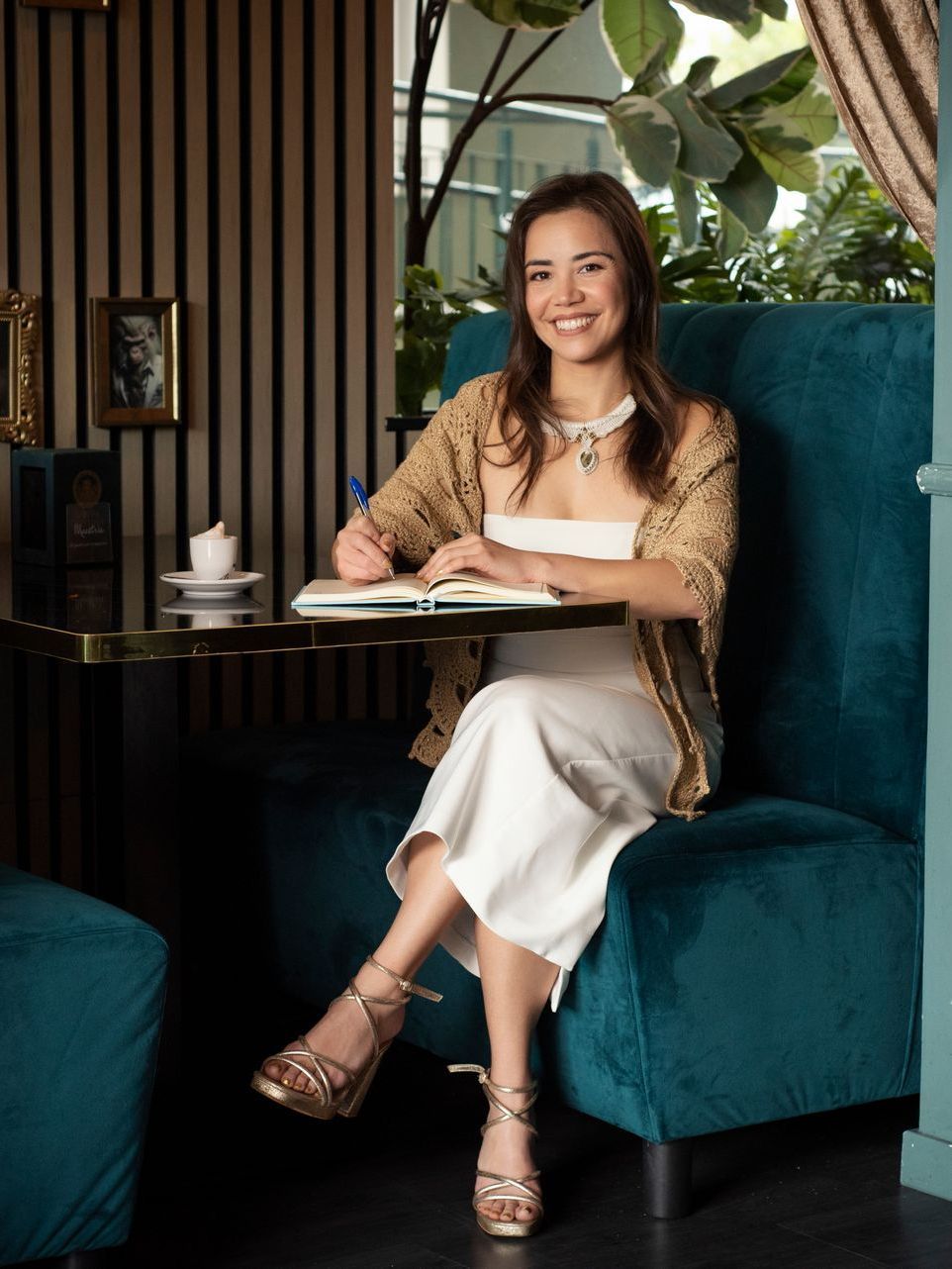
Welcome, I’m Shayna Grajo
Hi, I’m Shayna Grajo. I help healers, educators & artists build a long-term, sustainable marketing presence through SEO, copywriting, and website design. Together we nurture digital spaces and sustain your visibility with ease and integrity.
JOIN NOW
Equitable Wellness on Substack



